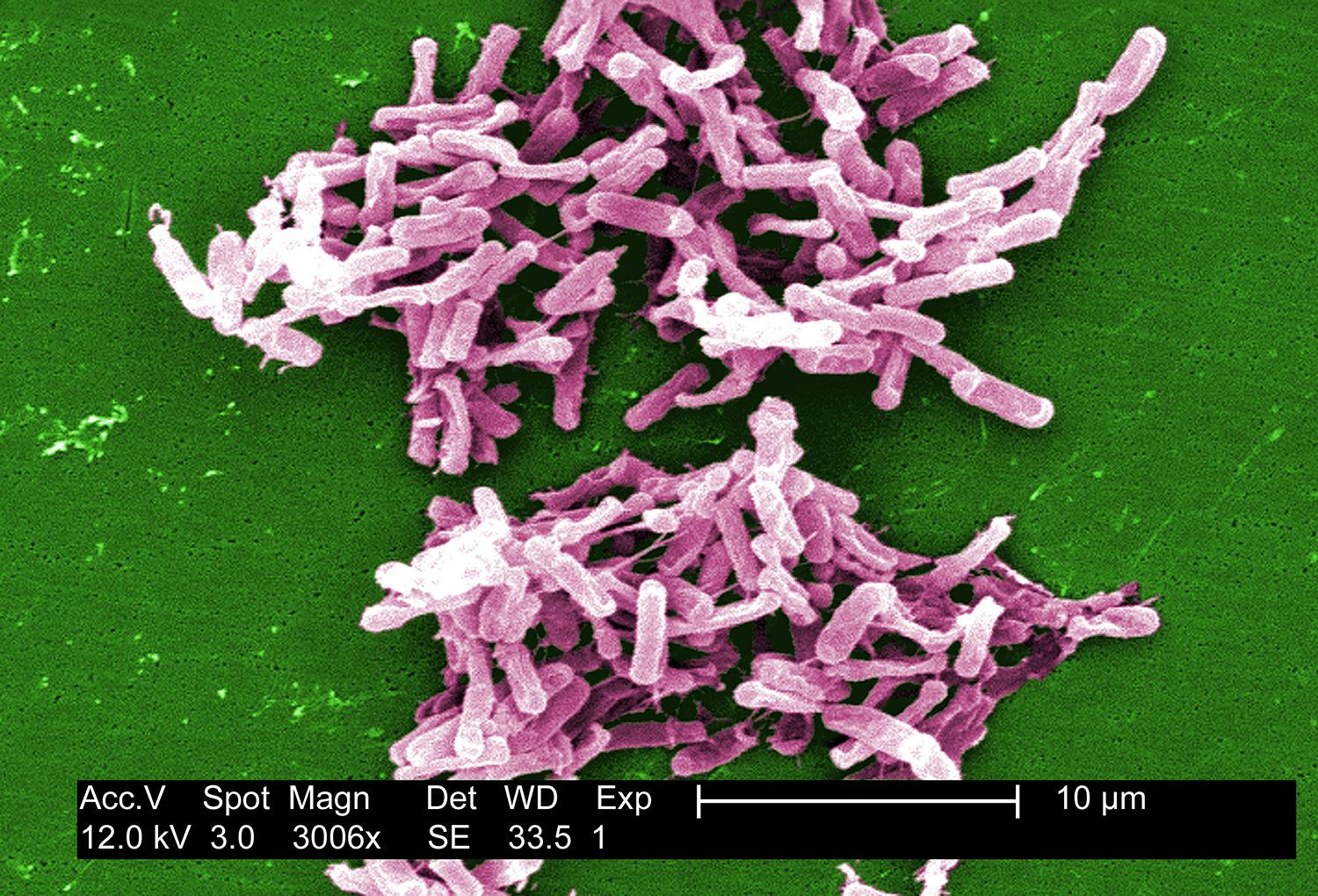Clostridioides difficile

Digitally colorized scanning electron microscopic (SEM) of Clostridioides difficile bacteria. Copyright holder: Janice Carr. Link: https://phil.cdc.gov/Details.aspx?pid=9999.
C. difficile is responsible for one of the most common transmissible diarrheal infections that occur in healthcare settings. In 2011, about half a million people became infected with this pathogen and around 29 000 people died from it in the United States. The most important risk factor for getting a C. difficile infection is treatment with antibiotics, because this reduces the microbial competition while C. difficile can form spores or have other mechanisms that makes it resistant to the antibiotic given. The bacteria releases many different kinds of toxins that cause inflammation, diarrhea and even necrosis of the mucosa in the colon. Between 1 in 10 and 1 in 4 people who recovered from a C. difficile infections will get another round of the disease within two months.
1928 offers the following analyses of C. difficile:
- MLST (Multilocus sequence typing).
- cgMLST (core genome MLST), typing with finer resolution than traditional MLST with our own schema built from 2631 genes.
- Genotypic prediction of resistance genes and mutations.
- SNP analysis for higher resolution of outbreaks.
- Virulence factors for binary toxin and enterotoxin and cytotoxin